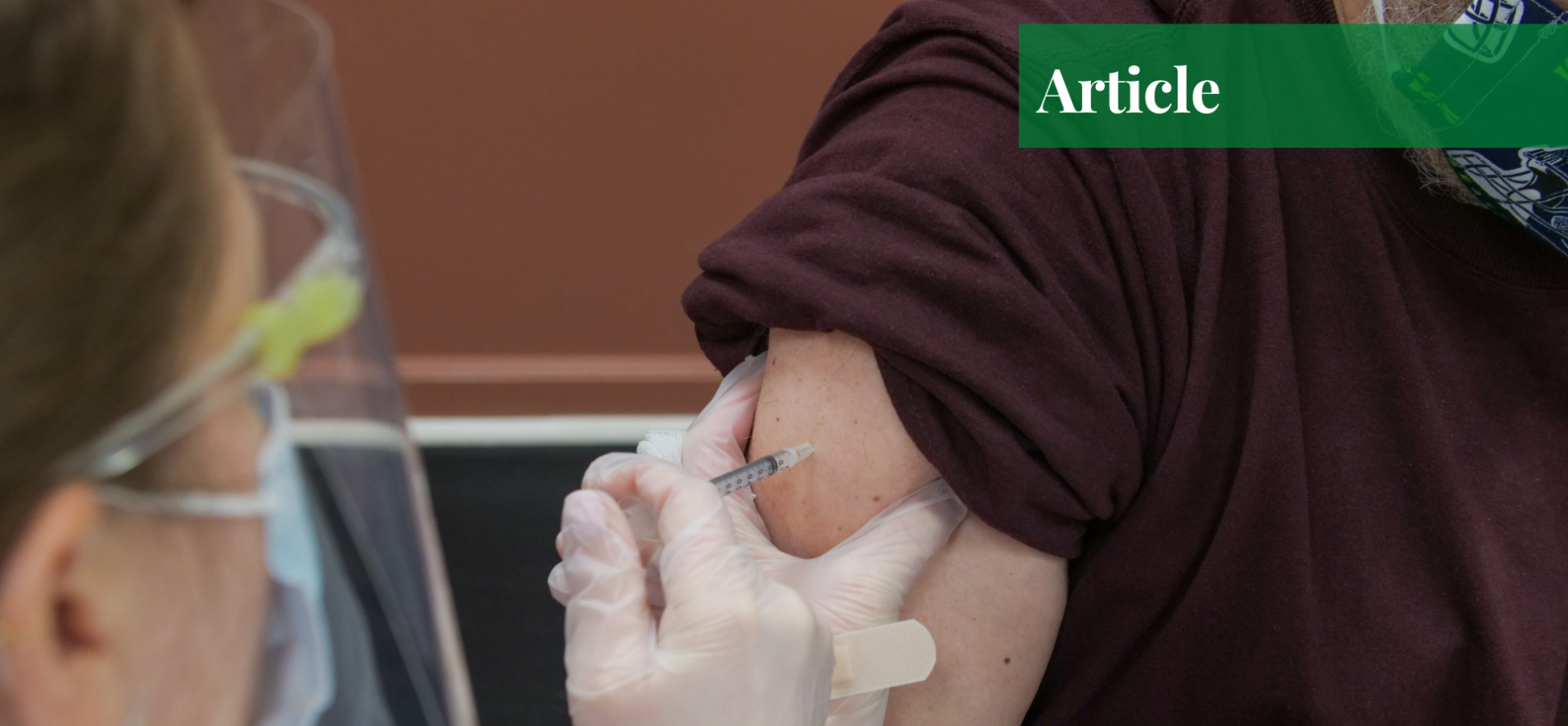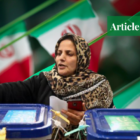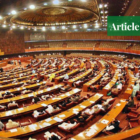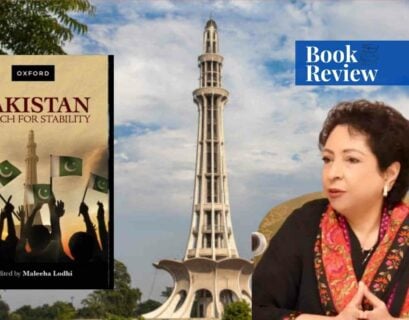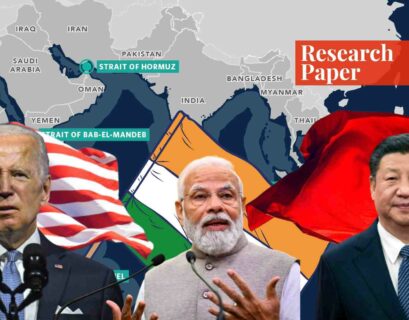Ms Ayesha Zafar is currently pursuing her Bachelor's in International Relations from National Defence University, Islamabad. She has authored multiple academic publications including research articles and book chapters. Her areas of interest include Middle Eastern politics, the geopolitics of Central Asia, and the Indo-Pacific region
Pandemic Diplomacy
The year 2020 has been a watershed in human history as the sudden onslaught of Covid-19 from the Chinese province of Wuhan triggered a global crisis, halted the cross-border movement, and negatively impacted the global economic growth on a scale not experienced since at least the global financial crisis. Nevertheless, it is important to analyze the changing geo-political dynamics through pandemic diplomacy amid Covid-19.
As with this pandemic, we saw China taking a global lead. It emerged from being a “sick man of Asia” to a world saviour, a title which the US should have in its hand, considering its position as the world hegemon. China has been trying to enhance its status and power in the international arena by coming up with silk roads, providing billion dollars worth of medical supplies, and shipping around 260 million vaccine doses to around 55 countries.
Yet, at the same time, the US, which is China’s arch-rival, has taken a back seat. It’s withholding WHO funds worth $400 million, accusing it of being a puppet of China, and the former US President Donald Trump’s continuous engagement in the “blame game” by calling coronavirus a “Chinese virus” has weakened its prominence across the globe.
As reflected by the tweet of former Swedish PM, Carl Bildt: “The UNSC is nowhere to be seen, G20 is in the hands of the Crown Prince of Saudi Arabia, and the White House has trumpeted America First and Everyone Alone for years. Only the virus is globalized.” Similarly, Katrin Bennhold, a correspondent for The New York Times, while analyzing the role of the US in the global pandemic, stated “This is perhaps the first global crisis in more than a century where no one is even looking to the United States for leadership.”
These statements show the perception regarding the role of the US in the most needed crisis. Henceforth, we can say that the international order set by the US so far would be subject to further testing once the pandemic ends. Moving further, there have been a lot of controversies regarding Covid-19, with China calling it as part of the US great game and a planned move against China.
In contrast, the US has been accusing China of its onset. To deal with this, China is perusing wolf-warrior diplomacy, with its diplomats defending China’s position in a more aggressive manner. Along with this, it has started working on discourse power and published a white paper titled “Fighting covid-19: China in action” on June 7, 2020, to counter the politicization of coronavirus as a Chinese virus by the US.
No matter what, it’s a fact that China despite all the criticism it faced for being labeled as the originator of coronavirus is the first country to effectively deal with it and has not faced the second wave. Rather, it is extending its supporting hands to other states in crisis thus winning the hearts and minds of many across the world, especially in developing countries.
Hence, Covid-19 has created an opportunity for China to use “pandemic diplomacy” as a soft power tool to enhance its status across the world. This pandemic diplomacy is a new and very pertinent concept that has entered IR discourse. It is primarily focused on providing medical supplies, aid, technical equipment, and vaccines to other countries as an effort to increase the soft power image and extend bilateral relations along with changing the negative perception of one state in another.
So, China, amid covid-19 and because of all the criticism that it has faced for being the first to have reported coronavirus, has started using pandemic diplomacy as a soft power tool to change the perceptions and to build an ideal image of a responsible actor.
Therefore, the article will be analyzing the emergence of the Central Asian region as a geopolitical hotspot for Sino-US competition, and how the Covid-19 situation in the region has created an opportunity for the two competitors to engage in pandemic diplomacy.
However, before we look into the actual situation of Covid-19 in the region, it’s important to have an idea of the reasons for such a crisis. The first is the negligence on part of the government. Tajikistan and Turkmenistan initially refused to recognize the existence of Covid-19. The second reason for such is the corruption in the healthcare sector that stymied the government’s response. Lastly, the poor health conditions, lack of facilities and social safety nets that exacerbated the situation are to blame.
Tajikistan
Tajikistan reported its first case of Covid-19 on April 30, 2020, and when it did, China was the first to extend its support. On May 24, 2020, China sent a team of fourteen medical experts for a nine-day visit to Tajikistan along with a third batch of medical supplies including testing kits, personal protection equipment (PPE), and ventilators totaling 9.3 tons.
Upon receiving this aid, Tajikistan’s PM, Emomali Rahmon, stated “Tajikistan highly appreciates China’s important contribution to the world’s fight against the pandemic, and appreciates China for its invaluable support in the battle against the outbreak…”. This statement shows how far China has been successful in changing the perceptions of these states about China after all the controversies raised against it.
Moreover, Xi-Jinping in a call with Tajikistan’s PM stated that the two countries had been together through all thin and thick of Covid-19 and that China was willing to strengthen the alignment of the Belt and Road Initiative (BRI) with Tajikistan’s National Development Strategy for the period up to 2030.
However, in this struggle, the US has also stepped in to extend its influence in the region. The United States Agency for International Development (USAID) sent around 12,000 surgical masks, 12,000 examination gloves, 1,400 surgical gowns, and 400 safety goggles. Along with this, it has reserved $37 million funds for 25 countries including Tajikistan.
The US Center for Disease Control (CDC) has provided $310,000 worth of laboratory equipment and supplies to Tajikistan, and around $2.6 million for medical oxygen systems. A total of $1.6 million in aid is given for the Covid-19 response. This shows the interest of the US in countering the increasing soft power of China in the Central Asian region.
Kazakhstan
Kazakhstan reported its first three cases of Covid-19 on March 13, 2020. Again, in such a crisis, China was the first to step in for support and sent its ten-member team on 9 April along with 4,800 N95 respirators, 49,600 surgical masks, 2,000 protection suits, and 2 ventilators. Kazakh Deputy Health Minister Kamalian Nadyrov stated “we are carefully studying the experience of our international colleague”.
In response to this, the Chinese Ambassador to Kazakhstan, Zhang Xiao said “A true friend is known in the day of adversity”. This was because when China was going through a similar crisis situation in the early days of Covid-19, it was Kazakhstan that provided support in the form of medical supplies.
By July 2020, China provided 50,000 tests, 150,000 gloves, 1,000 non-contact thermometers, 30,000 protective suits, and 600,000 masks. Jack Ma of Alibaba also sent a 4.5 ton-cargo of medical supplies to Kazakhstan. Xi-Jinping also calls for the Belt and Road Initiative (BRI) as a priority to establish needs with Kazakhstan.
However, as far as the vaccine is concerned, Kazakhstan is the only country in the Central Asian region with its own domestically produced vaccine “QazCovid” which is going through a third trial and is expected to be completed by July 2021. Moving to the US’s presence in Kazakhstan, the CDC donated $316,000 and $480,000 worth of equipment to three Kazakhstani laboratories.
The USAID has sent around 10,000 examination gloves, 10,000 masks, 1,400 isolation gowns, and a total of $6.2 million in assistance. It provided $500,000 to reduce human-to-human transmissions of COVID-19 in Kazakhstan and around $351,280 to the International Federation of Red Cross (IFRC) for combating Covid-19 in collaboration with the Kazakhstan Red Crescent Society.
Uzbekistan
In the case of Uzbekistan, both the US and China have been trying to ground their boots by fully exploiting the Covid-19 situation in the country. On March 27th, 2020, China sent 1 million Zhifei Longcom (ZF-UZ-VAC) vaccine doses to Uzbekistan.
On this, the Director of the Agency for Sanitary and Epidemiological Surveillance under the Ministry of Health of Uzbekistan, Dr. Bahrom Almatov stated: “I believe that with the strong support of the international community, including China, Uzbekistan will be able to achieve the final victory in the fight against pandemic”.
This shows the increasing relevance of China to the states in the Central Asian Region. Moving towards the US, its assistance to Uzbekistan for the Covid-19 response totaled $9.1 million by Nov 15, 2020. The US has also provided $60,000 for strengthening national laboratory systems. So, even in Uzbekistan, the US is trying to contain the influence of China.
Turkmenistan
Turkmenistan was the state that denied the existence of Covid-19 initially and continued its gatherings and celebrated the event of Nowruz. Chinese vaccine doses reached Turkmenistan on March 6th, 2021. The President of Turkmenistan, Gurbanguly Berdimuhamedov, praised the decisive measures taken in China to prevent and control coronavirus.
Here, the president appreciating China’s efforts in controlling coronavirus clearly indicates the changing perception Central Asia states have regarding China after all such support in the pandemic. Similarly, USAID committed $500,000 and another $ 1.42 million for resources to be made available to all partners in Turkmenistan.
Kyrgyzstan
The last state in this regard is Kyrgyzstan to which China sent KN95 face masks, medical-surgical masks, forehead thermometers, and protective goggles on May 12, 2020. Moreover, it gifted around 150,000 dozes of Sinopharm vaccine to 75,000 people.
Kyrgyzstan’s former Minister of Foreign Affairs, Chingiz Aidarbekov, stated that he highly appreciated China’s great achievements in fighting the epidemic and was thankful for its selfless help. The US, too, under pandemic diplomacy provided Kyrgyzstan with 10,000 surgical masks, 10,000 gloves, 1,400 gowns, and 200 protective goggles.
China Takes the Lead in Central Asia
Having analyzed the pandemic diplomacy of both the US and China in each Central Asian state, there are two factors that principally differentiate the two and give China an edge over the US in the region. First is the vaccine, as we see it, it is China that has provided its vaccine to almost every state of the Central Asian region, something which the US doesn’t provide currently as it is focusing on “America first”.
The second factor that gives China an edge over the US is its economic support to these states which is crucial for their management of daily affairs during the Covid-19 situation. According to World Bank, the GDP of Central Asian states fell by 5.4%. Moreover, these states largely depend on the remittances that contribute to their GDP; however, during the covid-19 crisis with a 20-percent decline in global remittances, the World Bank expects a 27.5 percent decline in remittances for Central Asia.
Therefore, in such a crisis, China extending support by bringing these states into the BRI is not only beneficial for China but also crucial for the Central Asian states to curb the economic fallout. The China Development Bank approved a loan of $309 million to allow Uzbekistan Airlines to purchase three Boeing 787-8 Dreamliners, and continued purchasing oil from Kazakhstan despite Covid-19 which helped it retain its economic pace.
Similarly, the China-backed Asian Infrastructure Investment Bank (AIIB) is providing financial support and investment to the regional countries; for instance, it lent a loan of $100 million to Uzbekistan for the fight against Covid-19. Hence, such incentives give China a lead over the US when it comes to influencing the region through pandemic diplomacy.
Conclusion
Conclusively, it is now a fact that China has emerged as a world leader in the Covid-19 pandemic and has proven itself to be a responsible actor trying to curb the crisis by extending its support to states across the world, especially the developing states by providing them with medical supplies, technical equipment, vaccine, and medical aid.
China through effective use of pandemic diplomacy in the Central Asian Region and across the world has very smartly built its soft power image and posed a challenge to the leadership role of the US. To conclude, pandemic diplomacy has really led to the emergence of the Central Asian region as a geopolitical hotspot for Sino-US competition, with China having an upper hand in the region through its vaccine diplomacy and its economic incentives.
If you want to submit your articles and/or research papers, please check the Submissions page.
The views and opinions expressed in this article/paper are the author’s own and do not necessarily reflect the editorial position of Paradigm Shift.
